Paisą Blu-ray Movie
HomePaisą Blu-ray Movie 
PaisanBFI Video | 1946 | 126 min | Rated BBFC: PG | Apr 01, 2015
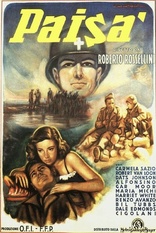
Price
Movie rating
7.3 | / 10 |
Blu-ray rating
| Users | 0.0 | |
| Reviewer | 4.0 | |
| Overall | 4.0 |
Overview
Paisą (1946)
Six episodes set across Italy during the country's liberation at the end of World War II examine the struggles of different cultures to communicate and of people to live their everyday lives.
Starring: Carmela Sazio, Robert Van Loon, Benjamin Emanuel, Raymond Campbell (I), Harold WagnerNarrator: Giulio Panicali
Director: Roberto Rossellini (I)
| Foreign | 100% |
| Drama | 91% |
| War | 13% |
Specifications
Video
Video codec: MPEG-4 AVC
Video resolution: 1080p
Aspect ratio: 1.37:1
Original aspect ratio: 1.37:1
Audio
Italian: LPCM 2.0
Subtitles
English, English SDH
Discs
50GB Blu-ray Disc
Single disc (1 BD)
Playback
Region B (locked)
Review
Rating summary
| Movie | 4.5 | |
| Video | 4.5 | |
| Audio | 4.5 | |
| Extras | 1.5 | |
| Overall | 4.0 |
Paisą Blu-ray Movie Review
Reviewed by Dr. Svet Atanasov July 24, 2017Roberto Rossellini's "Paisan" (1946) arrives on Blu-ray courtesy of the British Film Institute. The only bonus feature on disc is a visual essay from scholar Tag Gallagher. Also included in the box set is a 36-page fully illustrated booklet featuring writings on the film and full film credits. In Italian, with optional English and English SDH subtitles for the main feature.
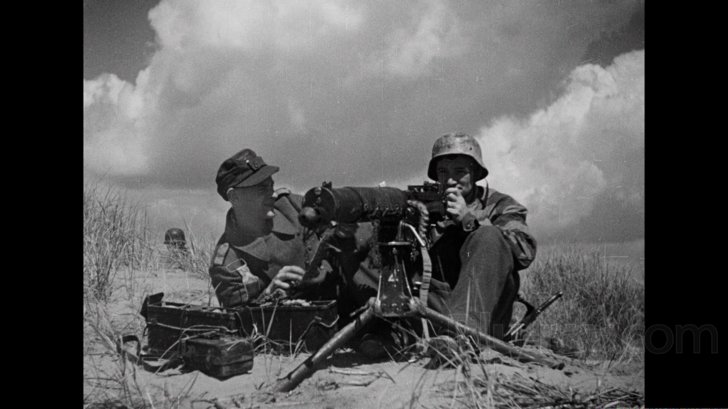
Note: Paisan is part of the British Film Institute's Rossellini: The War Trilogy three-disc limited edition Blu-ray box set.
The second film in Roberto Rossellinis acclaimed War Trilogy, Paisan, is structured as a collection of six vignettes, each introducing new characters but without ever choosing any stars. It functions as a documentary feature whose goal is to give the viewer an authentic sense of the dangerous chaos during the final days of WW2.
Prior to each vignette a narrator addresses the ongoing clashes between the Nazis, the Allies and occasionally scattered groups of Italian partisans. The descriptions are short, mostly factual and delivered with a clear patriotic tone. Raw archival footage from the fierce battles is also used as evidence that the narrators descriptions are accurate.
The different characters that emerge in each vignette are never given a chance to establish any sort of an intimate relationship with the viewer, but through a series of events their typically desperate situations leave a lasting impression. For example, in liberated Naples a drunken American soldier has his boots stolen by a cheeky orphan and when later on he visits the ruins where the boy lives he is so overwhelmed by the misery that he witnesses there that his only rational reaction is to run away. (This is obviously a man who has been in numerous battles and seen fellow soldiers die). In Rome a beautiful Italian girl who has been making ends meet as a prostitute picks up a slightly drunk American soldier and then rents a room in a rundown hotel to spend the night with him, but shortly after she discovers that he has been looking for a local girl that he met and fell in love with when he first arrived in the city -- and before the night is over she realizes that she is his dream girl but he can no longer recognize her. In an old castle in the countryside a Sicilian girl and an American soldier also become attracted to each other despite the fact that they can use only a few words to communicate, but their unusual bond is tested when a group of Nazi soldiers discover their hiding place. Perhaps the most visually striking footage is from occupied Florence where an American nurse decides to begin searching for her boyfriend, an Italian partisan, who was last seen in an area of the city where fierce street battles are still underway. Here some of the panoramic vistas are every bit as extraordinary as the ones seen in Germany Year Zero.
Excluding the short exchanges between the three American soldiers and the monks in the secluded monastery where Rosseliini temporarily shifts the focus of attention to a different conflict -- here the whole concept of liberation is placed in a new context after the monks discover that two of their guests are of different faith and begin praying for their salvation -- the film most certainly works as intended. It is an eye-opener for anyone looking to understand the unpredictable dynamics of the final stage of a global war that was fought by people from different cultures that were united by a common goal.
Rossellini used a very large number of non-professional actors and some lesser known and up-and-coming actors. Unsurprisingly, at times the performances can be a bit uneven. A young Federico Fellini, who contributed to the script for the film and served as a second assistant director, can be spotted in the third vignette.
Paisą Blu-ray Movie, Video Quality 
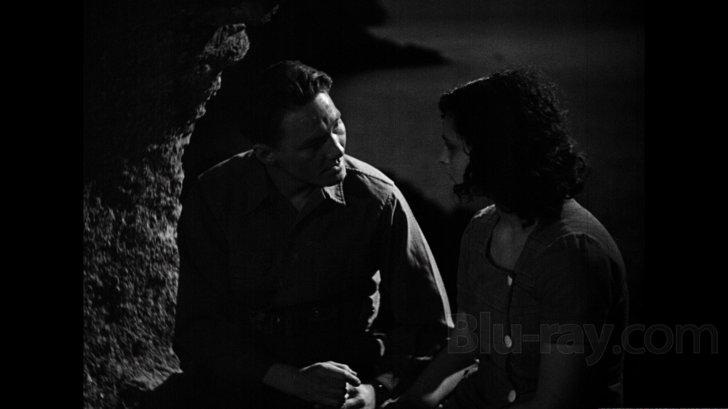
Presented in its original aspect ratio of 1.37:1, encoded with MPEG-4 AVC and granted a 1080p transfer, Roberto Rossellini's Paisan arrives on Blu-ray courtesy of the British Film Institute.
The release is sourced from the restoration of Paisan that was completed by Cineteca di Bologna and CSC - Cineteca Nazionale at L'Immagine Ritrovata laboratory in 2013. (It is reportedly a 4K scan and 2K restoration work). The same master was also used by Criterion for the recent North American release of the film. I could not see any dramatic discrepancies between the two presentations. It is possible that some additional minor imperfections (specks and scratches) were removed on the Criterion release, but given the nature of the surviving materials the overall quality of the images is essentially identical. So I think that the important thing to point out is that the restored master is free of digital anomalies, and that the end result has strong and convincing organic qualities. (Note: This is a Region-B "locked" Blu-ray release. Therefore, you must have a native Region-B or Region-Free PS3 or SA in order to access its content).
Paisą Blu-ray Movie, Audio Quality 

There is only one standard audio track on this Blu-ray release: Italian LPCM 2.0 (with small portions of English). Optional English and English SDH subtitles are provided for the main feature.
The audio has remastered, cleaned up and stabilized. Some unevenness remains, with the mid/high frequencies showing the most obvious traces of aging, but none of the minor inherited source limitations will negatively affect your viewing experience.
Paisą Blu-ray Movie, Special Features and Extras 
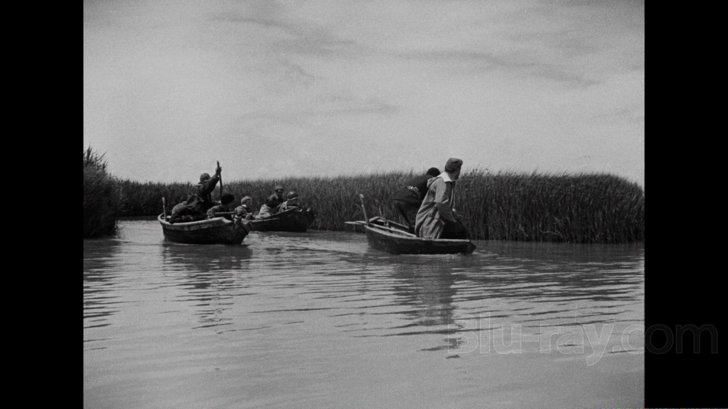
- Into the Future - presented here is a video essay in which Roberto Rossellini scholar Tag Gallagher offers an in-depth analysis of the films in the War Trilogy and the era they representative of. In English, not subtitled. (31 min).
- Booklet - 36-page fully illustrated booklet featuring writings by Tag Gallagher, Geoffrey Nowell-Smith and Jonathan Rosenbaum, and full film credits.
Paisą Blu-ray Movie, Overall Score and Recommendation 
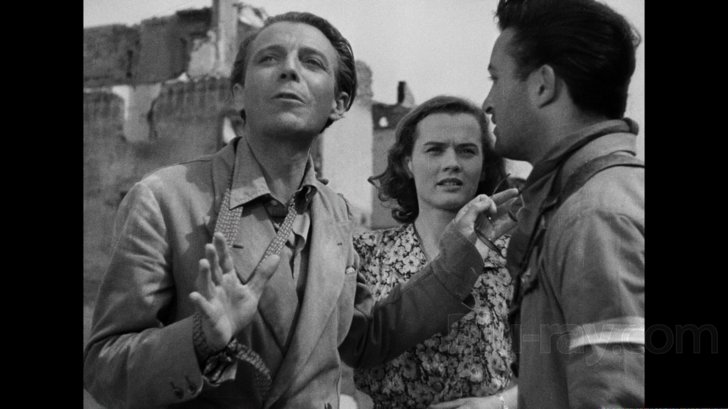
The second film in Roberto Rossellini's War Trilogy, Paisan, chronicles the arrival of the Allies in Calabria and then the gradual liberation of Italy as they moved up north. However, the film actually focuses on the difficult communication between the liberators, the partisans and ordinary Italians, rather than the dynamics of the many battles that were fought along the way. Paisan has been recently restored and looks great in high-definition. It is included in the BFI's Roberto Rossellini: The War Trilogy, though I should mention that there is a brand new edition coming in about two weeks.
Similar titles
Similar titles you might also like
(Still not reliable for this title)

Germany, Year Zero
Germania Anno Zero
1948

Rome, Open City
Roma, cittą aperta
1945

L' Amore
1948

Bicycle Thieves
Ladri di biciclette | Remastered | Arrow Academy
1948

Accattone / Love Meetings
Masters of Cinema
1961

L' Avventura
1960

The Conformist
Il Conformista / Arrow Academy
1970

La Dolce Vita
1960

Nights of Cabiria
Le notti di Cabiria / Vintage World Cinema
1957

8½
Otto e mezzo / Federico Fellini's 8½
1963

The Marriage of Maria Braun
Die Ehe der Maria Braun / Arrow Academy
1978

Umberto D.
1952

Stalingrad
20th Anniversary Edition
1993

The Painted Bird
Nabarvené ptįce / Montage Pictures
2019

Like Someone in Love
ライク・サムワン・イン・ラブ / Raiku Samuwan In Rabu
2012

The Great Beauty
La grande bellezza
2013

A Special Day
Una giornata particolare
1977

Ivan's Childhood
Ива́ново де́тство / Ivanovo detstvo
1962

La Grande Illusion
Grand Illusion
1937

The Night of the Shooting Stars
La notte di San Lorenzo / The Night of Saint Lorenzo
1982